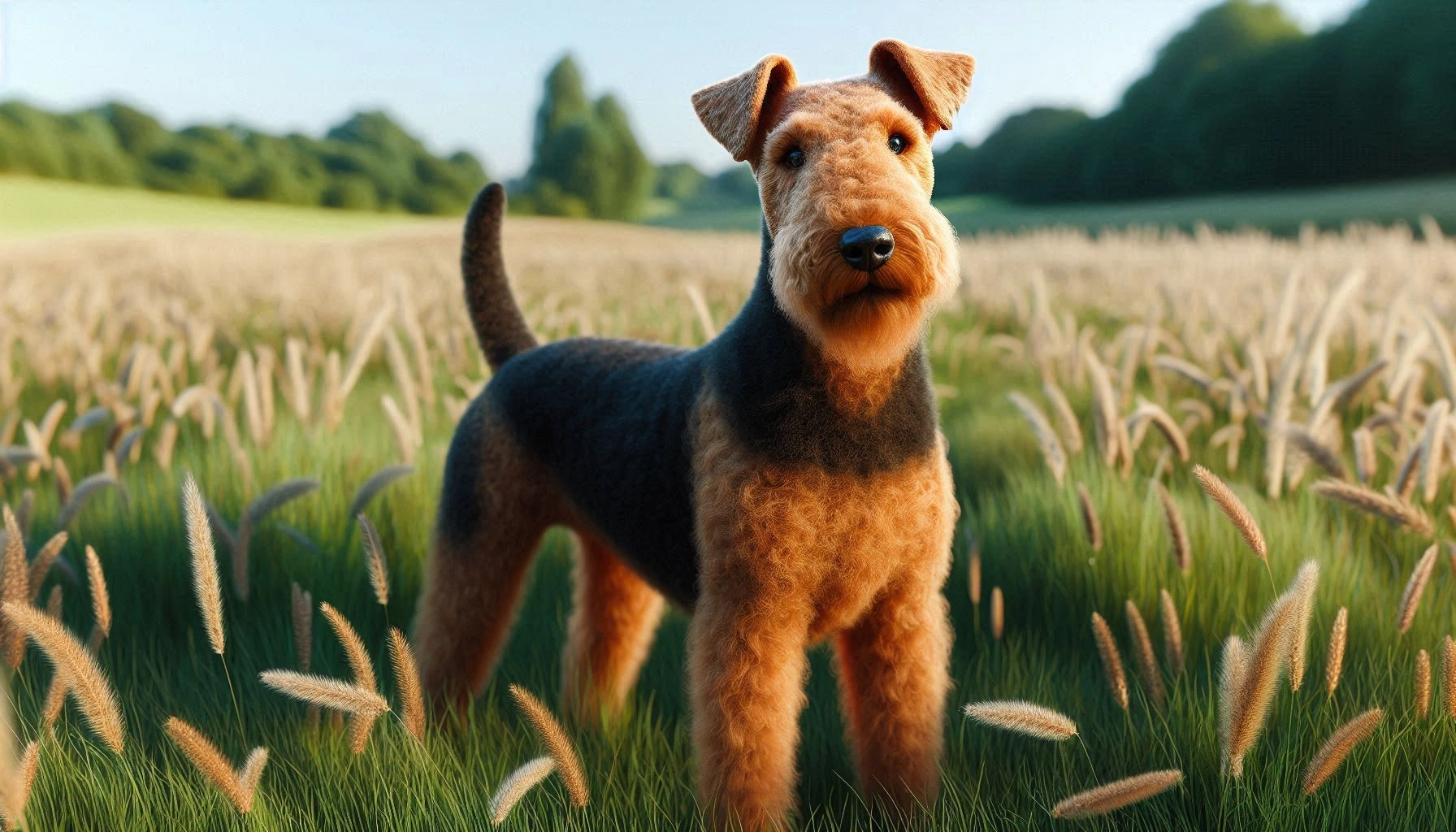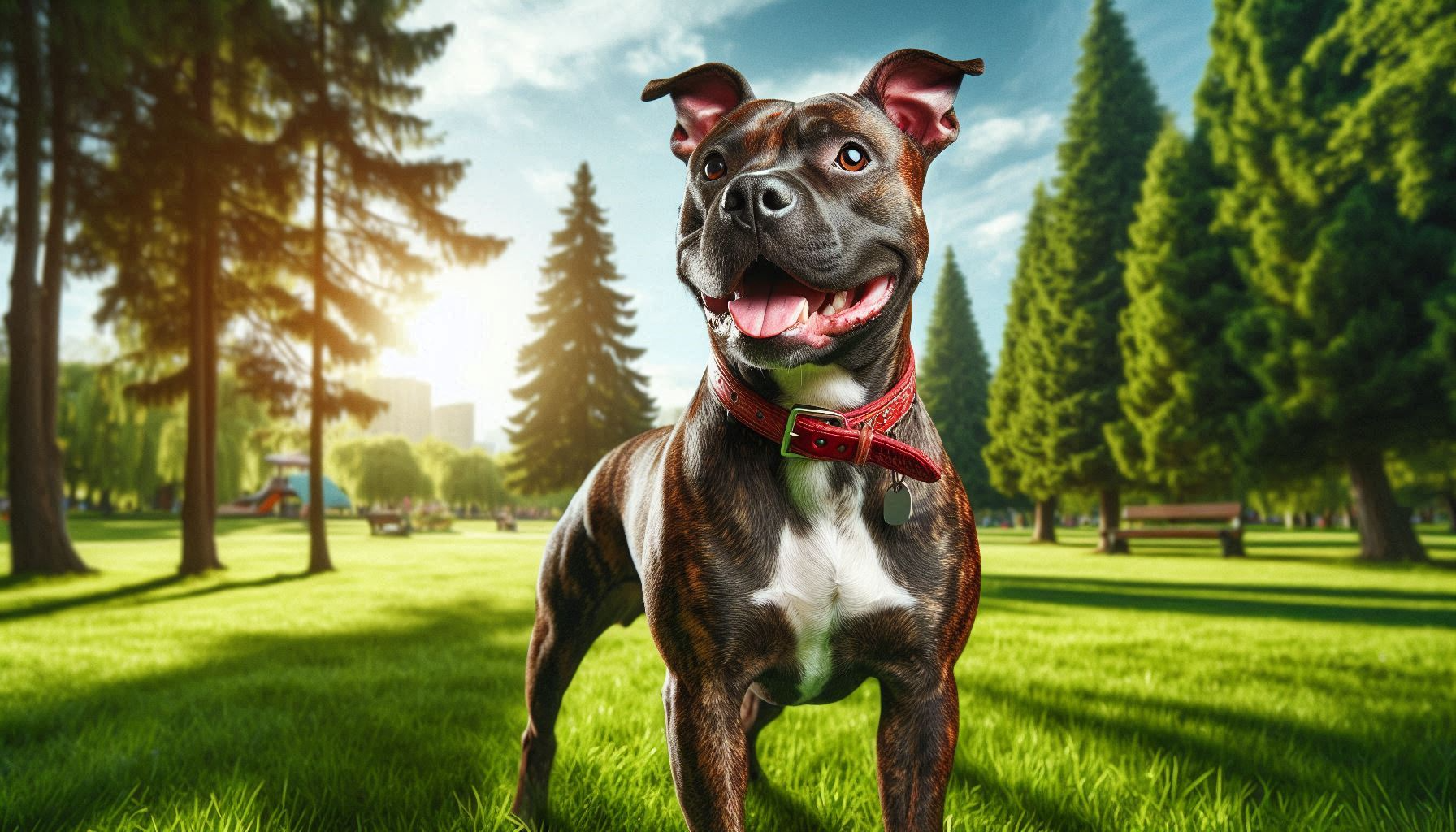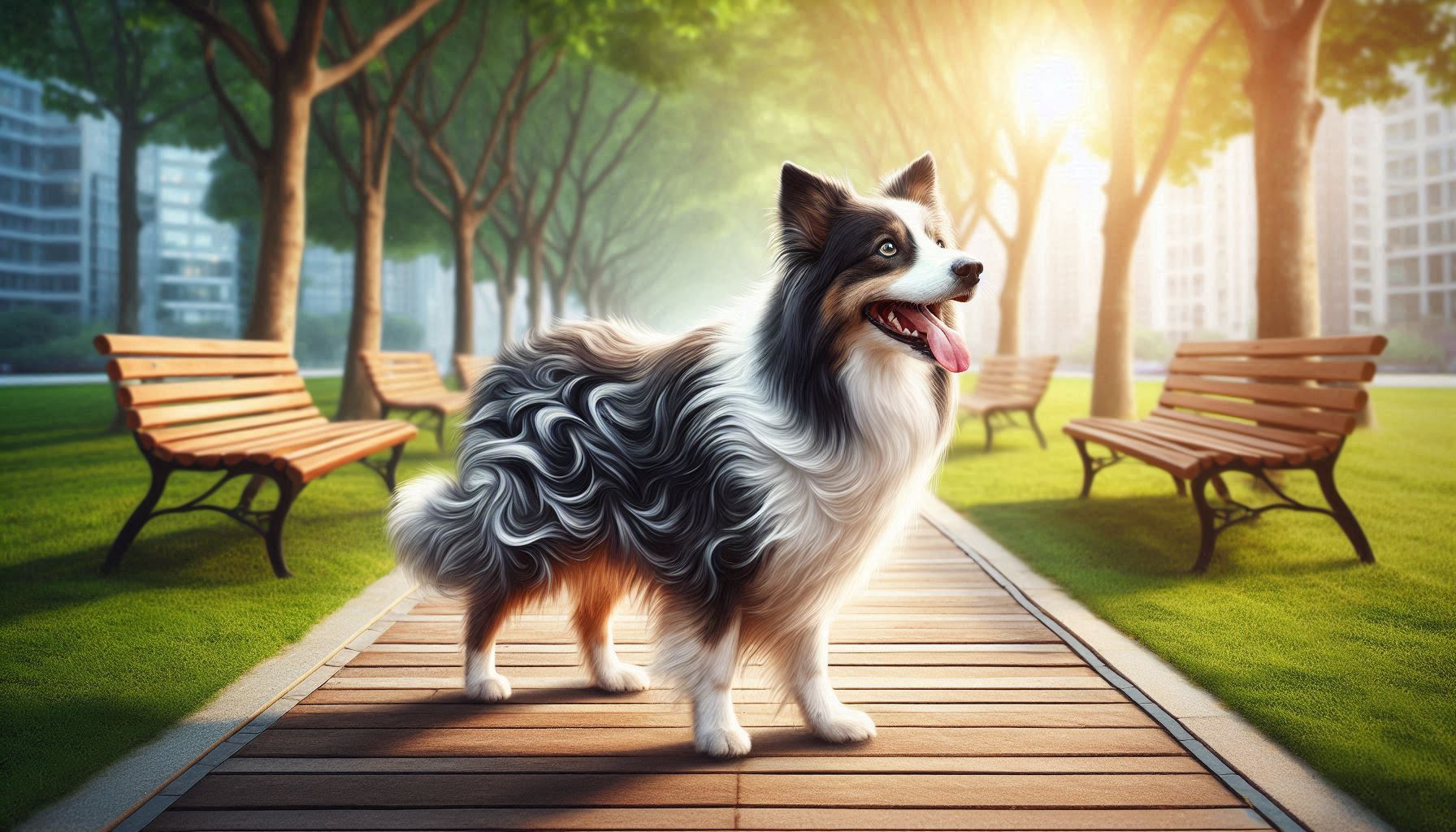Table of Contents
English Foxhound Dog Breed
The English Foxhound is a majestic and loyal dog breed known for its hunting prowess and amiable disposition. As one of the oldest and most esteemed breeds, it has a rich heritage that makes it a favorite among dog enthusiasts. This breed stands out for its athletic build, keen sense of smell, and friendly nature. Whether you’re an avid hunter or simply looking for a devoted family pet, the English Foxhound offers a unique blend of characteristics that make it a popular choice among dog owners.
History and Origin

The English Foxhound has a storied history that dates back to the 16th century in England. Bred specifically for fox hunting, this breed was developed by crossing various types of hounds, including the Greyhound, Fox Terrier, and Bulldog. The aim was to create a dog with stamina, speed, and a keen sense of smell to track and chase foxes over long distances and rugged terrain.
Historically, English Foxhounds were integral to the traditional British fox hunts, a sport enjoyed by the nobility and gentry. These dogs were prized for their ability to work tirelessly in packs, their relentless drive, and their harmonious baying during hunts. Over the centuries, they have maintained their essential traits and continue to be cherished for their hunting abilities and companionship.
Physical Characteristics
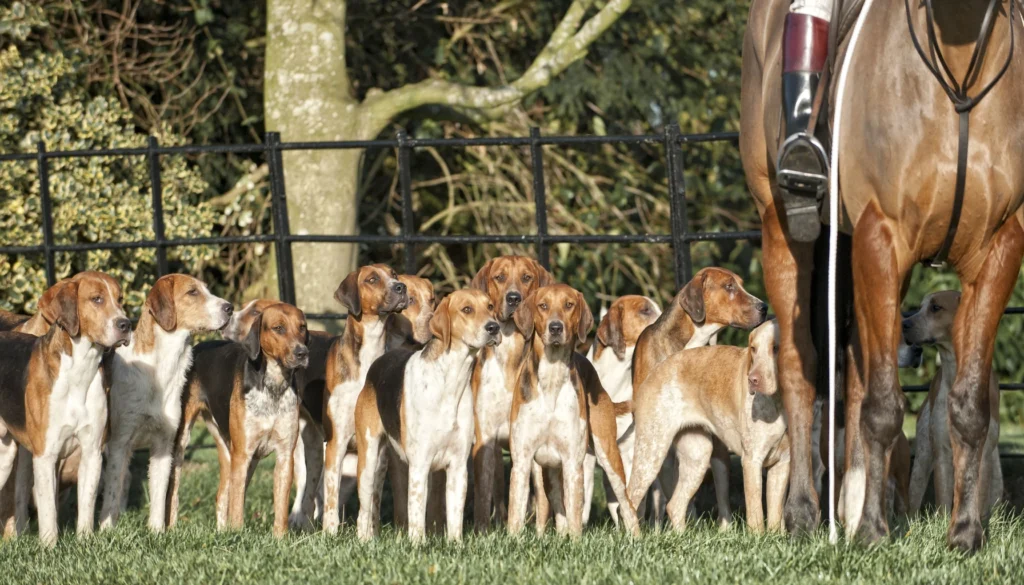
The English Foxhound is a medium to large-sized dog, boasting a robust and athletic build. Here are some key physical characteristics:
- Size: Males typically stand between 22 to 25 inches tall at the shoulder, while females range from 21 to 24 inches. They generally weigh between 65 to 75 pounds.
- Coat: The coat is short, dense, and hard to the touch, providing protection in all weather conditions. It requires minimal grooming, making it easy to maintain.
- Colors: Common coat colors include black, white, and tan. They often have a tri-color pattern, with patches of each color adorning their sleek bodies.
- Distinctive Features: English Foxhounds have long, straight legs, a deep chest, and a well-proportioned head with a slightly domed skull. Their ears are set low and hang close to their cheeks, and their eyes are large and expressive, often conveying a friendly and alert expression.
Temperament and Personality
English Foxhounds are known for their gentle and sociable nature. They are pack animals by instinct, which makes them exceptionally friendly and good-natured. Here’s what you can expect from their temperament and personality:
- Interaction with People: English Foxhounds are affectionate and loyal to their families. They thrive on human companionship and enjoy being part of the household activities.
- Children: These dogs are excellent with children, displaying patience and playfulness. Their gentle demeanor makes them a great choice for families with young kids.
- Other Animals: Due to their history as pack animals, English Foxhounds generally get along well with other dogs. However, their hunting instincts can sometimes make them less compatible with smaller pets like cats or rabbits unless properly socialized from a young age.
Health and Lifespan
The English Foxhound is a generally healthy breed with a lifespan of 10 to 13 years. However, like all breeds, they are prone to certain health issues. Common health concerns include:
- Hip Dysplasia: A genetic condition where the hip joint doesn’t fit properly into the hip socket, leading to arthritis and pain.
- Ear Infections: Due to their floppy ears, they can be prone to ear infections if not regularly cleaned and checked.
- Bloating: Also known as gastric torsion, this is a serious condition that can affect deep-chested dogs, causing the stomach to twist and require immediate veterinary attention.
To keep your English Foxhound healthy, ensure they receive regular veterinary check-ups, maintain a balanced diet, and get plenty of exercise.
Care and Grooming

Caring for an English Foxhound is relatively straightforward, thanks to their short coat and robust health. Here are some essential care and grooming tips:
- Grooming Needs: Their short coat requires minimal grooming. A weekly brush to remove loose hairs and a bath every few months will keep them clean and healthy. Regularly check their ears for signs of infection and trim their nails as needed.
- Exercise Requirements: English Foxhounds are high-energy dogs that require plenty of exercise. Daily walks, runs, and playtime in a secure area are essential to keep them physically and mentally stimulated.
- Dietary Recommendations: Provide a balanced diet appropriate for their age, weight, and activity level. High-quality commercial dog food or a well-planned homemade diet can meet their nutritional needs. Always ensure they have access to fresh water.
Training and Socialization
Training and socializing an English Foxhound can be both rewarding and challenging due to their independent and sometimes stubborn nature. Here are some tips to help you succeed:
- Early Socialization: Introduce them to a variety of people, places, and other animals from a young age. This helps them become well-adjusted adults.
- Consistent Training: Use positive reinforcement techniques such as treats, praise, and play to encourage good behavior. Consistency and patience are key, as English Foxhounds can sometimes be slow to learn.
- Obedience Classes: Enrolling in obedience classes can provide structured training and socialization opportunities, making the process smoother for both you and your dog.
Suitability as a Family Pet

English Foxhounds make excellent family pets for the right households. Consider the following points:
- Living Environment: They do best in homes with access to large, secure yards where they can run and play. Apartments or small homes without outdoor space may not be ideal.
- Energy Levels: High energy levels mean they need active families who can provide plenty of exercise and mental stimulation.
- Companionship: English Foxhounds thrive on companionship and can experience separation anxiety if left alone for long periods. They are happiest in homes where someone is usually around.
Fun Facts and Trivia
- Royal Connections: English Foxhounds have a regal history and were often kept by British nobility for fox hunting.
- Bay of the Hound: Their distinctive baying sound is unique and was historically used to communicate with hunters during a chase.
- Marathon Runners: Known for their endurance, English Foxhounds can cover vast distances without tiring, making them excellent companions for long-distance runners.
Dog Breeds Similar to the English Foxhound
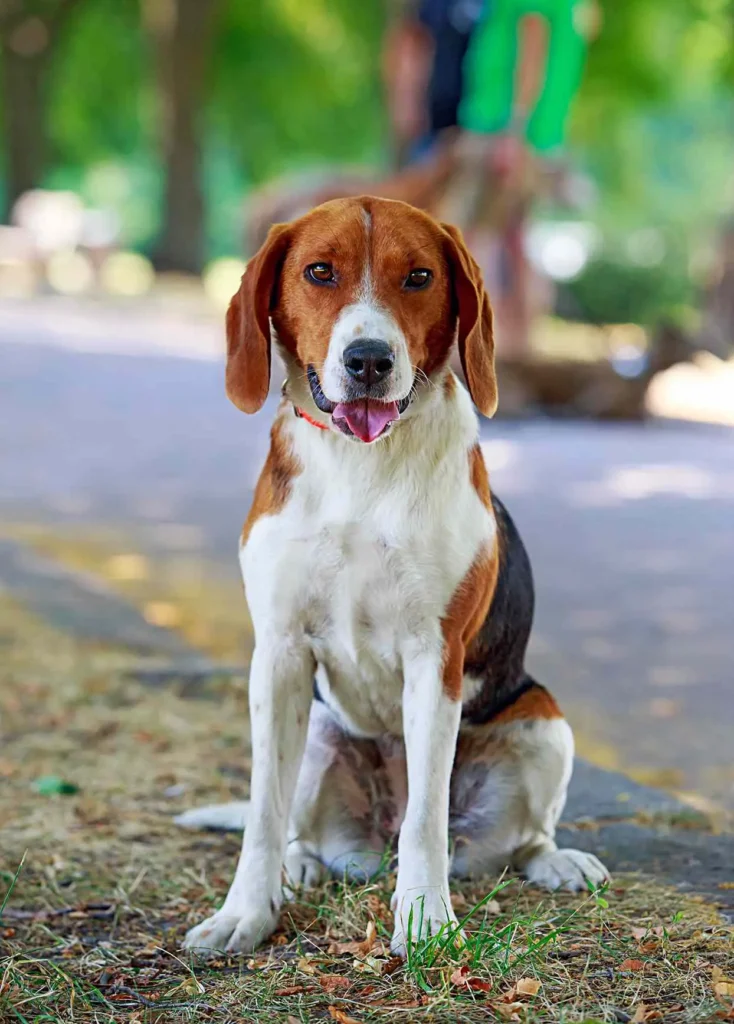


- American Foxhound: Similar in appearance and temperament, the American Foxhound is slightly taller and leaner. They share the same hunting heritage and are known for their musical bays.
- Beagle: A smaller relative, the Beagle is also a scent hound with a friendly and affectionate nature. They are excellent family pets and great with children.
- Harrier: Another hound breed, the Harrier resembles a smaller English Foxhound. They are energetic, friendly, and good-natured, making them suitable for active families.
Conclusion
The English Foxhound is a remarkable breed with a rich history and a winning personality. Their friendly nature, loyalty, and athleticism make them excellent companions for active families and hunters alike. If you’re considering adding an English Foxhound to your family, ensure you can meet their exercise needs and provide the companionship they thrive on. Explore more about this wonderful breed and see if it’s the right fit for your home.
FAQ
Is the English Foxhound a dangerous dog?
No, the English Foxhound is not considered a dangerous dog. They are known for their gentle and friendly nature. With proper training and socialization, they can be excellent companions and are typically great with children and other dogs.
Is the English Foxhound the best guard dog to protect you or your family?
While English Foxhounds are loyal and alert, they are not typically used as guard dogs. Their friendly disposition means they are more likely to greet strangers with a wagging tail rather than act as a deterrent. If you need a guard dog, breeds like the German Shepherd or Rottweiler may be more suitable.
